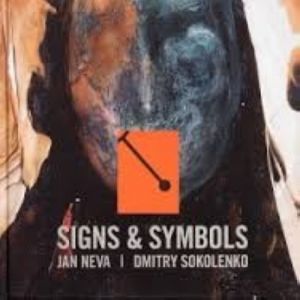Two interesting artists Jan Neva and Dmitry Sokolenko have become friends in St. Petersburg and made a number of exhibitions yhdessä.Jan Neva (b. 1974) is a painter whose paintings symbolically chock-full of strength and skill. He has been an artist for the education both in Finland and in Russia. Prone Kuusamo writes: Jan Neva believes that the "great stories" are not dead. Each ashes of the last great narrative inevitably rises to a new one. This interactive movement is a part of us profitable myths uudistuvaadynamiikkaa. It is a culture generator double motion, where the new "great stories" to prohibit discourses will also increasingly larger narrative. This mythical culture movement is not really can not pysäyttää.Dmitry Sokolenko Art is a brand for crystallization. This atmospheres Kuusamo describes his work: Sokolenko starting point is that each of his ideas for the reduced mass of the figure is at least two or three meanings, which are closely linked to each other. Images consist of symbolic fragments, where the color or shape of the references are "correctly" but vierautettuna their normal representaatiotehtävistä. Images can be found in conventional symbols in bits and pieces, but on the whole takes shape as a new combination, which is associated with the new pictorial configurations and worldviews, and thus shows the finally concentrated merkityksen.Kirjan folding transported in parallel between the two artist's works, which externally are quite contradictory. The book is an interesting ensemble of two different worlds.
Kaksi mielenkiintoista taiteilijaa Jan Neva ja Dmitry Sokolenko ovat ystävystyneet Pietarissa ja tehneet useita näyttelyitä yhdessä.Jan Neva (s. 1974) on maalari, jonka symbooliset maalaukset pursuavat voimaa ja taitoa. Hän on saanut taiteilijakoulutuksen sekä Suomessa että Venäjällä. Altti Kuusamo kirjoittaa: Jan Neva katsoo, että "suuret tarinat" eivät ole kuolleet. Jokaisen edellisen suuren kertomuksen tuhkasta nousee väistämättä uusi. Tämä vuoroliike on osa meitä kannattavien myyttien uudistuvaadynamiikkaa. Kysymyksessä on kulttuurin generaattorin kaksoisliike, jossa uusia "suuria kertomuksia" kieltäviä diskursseja nousee myös yhä suuremmiksi kertomuksiksi. Tätä myyttistä liikettä kulttuurissa ei tosiaankaan voi pysäyttää.Dmitry Sokolenkon taide on merkkien kiteytymiä. Näin Altti Kuusamo kuvaa hänen työtään: Sokolenkon lähtökohta on, että jokaisessa hänen ideoimassaan pelkistyneessä kuvassa on vähintään kaksi tai kolme merkitystä, jotka kytkeytyvät kiinteästi toisiinsa. Kuvat koostuvat symbolisista fragmenteista, joissa väri- tai muotoviitteet ovat "oikein" mutta vierautettuna niiden normaaleista representaatiotehtävistä. Kuvista voi löytää konventionaalisten symbolien palasia, mutta kokonaisuus muotoutuu uudeksi kombinaatioksi, joka assosioituu uusiin kuvallisiin ja maailmankuvallisiin konfiguraatioihin, ja esittää siten lopuksi tiivistetyn merkityksen.Kirjan taitto kuljettaa rinnan näiden kahden taiteilijan töitä, jotka ulkoisesti ovat varsin ristiriitaisia. Kirja on mielenkiitoinen kokonaisuus kahta eri maailmaa.
Two interesting artists Jan Neva and Dmitry Sokolenko have become friends in St. Petersburg and made a number of exhibitions yhdessä.Jan Neva (b. 1974) is a painter whose paintings symbolically chock-full of strength and skill. He has been an artist for the education both in Finland and in Russia. Prone Kuusamo writes: Jan Neva believes that the "great stories" are not dead. Each ashes of the last great narrative inevitably rises to a new one. This interactive movement is a part of us profitable myths uudistuvaadynamiikkaa. It is a culture generator double motion, where the new "great stories" to prohibit discourses will also increasingly larger narrative. This mythical culture movement is not really can not pysäyttää.Dmitry Sokolenko Art is a brand for crystallization. This atmospheres Kuusamo describes his work: Sokolenko starting point is that each of his ideas for the reduced mass of the figure is at least two or three meanings, which are closely linked to each other. Images consist of symbolic fragments, where the color or shape of the references are "correctly" but vierautettuna their normal representaatiotehtävistä. Images can be found in conventional symbols in bits and pieces, but on the whole takes shape as a new combination, which is associated with the new pictorial configurations and worldviews, and thus shows the finally concentrated merkityksen.Kirjan folding transported in parallel between the two artist's works, which externally are quite contradictory. The book is an interesting ensemble of two different worlds.













